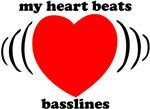from: http://sweetscam.com/how-its-made/#corn
A common misconception is that high fructose corn syrup is "high" in fructose, which is not true. Like beet sugar and cane sugar, it is composed of nearly equal amounts of glucose and fructose. It is classified as high in fructose only because it has more fructose than normal corn syrup, which is made of glucose.
A common misconception is that high fructose corn syrup is "high" in fructose, which is not true. Like beet sugar and cane sugar, it is composed of nearly equal amounts of glucose and fructose. It is classified as high in fructose only because it has more fructose than normal corn syrup, which is made of glucose.
- To make high fructose corn syrup, the corn is first harvested and sent to the wet mill.
- Next, the corn is crushed in a mill and then run through screens in order to separate the corn starch from other parts of the kernel.
- After being separated, natural enzymes are added to the liquid, which converts some of the sugars in the liquid from glucose to fructose. The resulting liquid is typically 42 percent fructose and 58 percent glucose.
- From there, the liquid is passed through activated carbon and filtered.
- The final product is called HFCS-42, and is used to sweeten many baked goods.
- Some of the HFCS-42 then goes through a liquid filtration process to increase the fructose content, creating a liquid that is 90 percent fructose. This product is called HFCS-90.
- Finally, the two liquids, HFCS-42 and HFCS-90, are blended to make a mixture that is 55% fructose. The final blend, called HFCS-55, is widely used as a sweetener in sodas.
Other Sweeteners
- Brown sugar
- Brown sugar follows the same production process as white sugar. Molasses is added at the very end, giving brown sugar its color and name.
- Agave nectar
- Agave nectar comes from the juices of agave plants, such as the blue agave. Agave plants are grown for 7 to 10 years before they reach maturity. Upon reaching maturity, the stalks (5 to 6 feet tall) are cut and the core of the agave plant grows further before being taken out. The core is then steamed and pressed (or chopped) so that juice emerges. Agave nectar is made by filtering the juice through enzymes and then heating it.
- Honey
- Honey is produced by bees, which drink nectar from flowers and tree blossoms. The bees then regurgitate the nectar when they return to their hive. Later, they chew, swallow, and regurgitate this nectar again, repeating this process several times. Natural enzymes in the bees turn the nectar into honey. Eventually, this regurgitated nectar—honey—is stored in the honey comb and sealed off with wax.
- Maple syrup
- Maple syrup is produced through a simple method that has been used for hundreds of years. First, a “tap” is inserted into a maple tree near the ground. Sap from the maple tree flows out through the tap and into a collection bucket. The sap is mostly water, but it is boiled until the water evaporates. The remaining thick, viscous liquid is maple syrup.
From the FDA:
Where does HFCS come from?
HFCS is derived from corn starch. Starch itself is a chain of glucose (a simple sugar) molecules joined together.
When corn starch is broken down into individual glucose molecules, the end product is corn syrup, which is essentially 100% glucose.
To make HFCS, enzymes are added to corn syrup in order to convert some of the glucose to another simple sugar called fructose, also called “fruit sugar” because it occurs naturally in fruits and berries.
HFCS is ‘high’ in fructose compared to the pure glucose that is in corn syrup. Different formulations of HFCS contain different amounts of fructose









